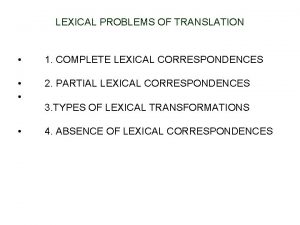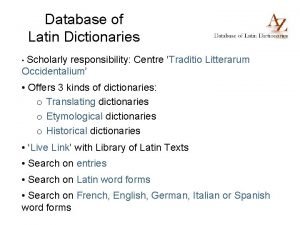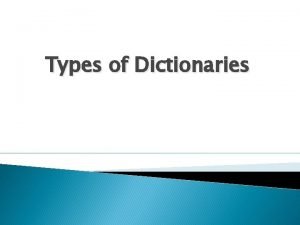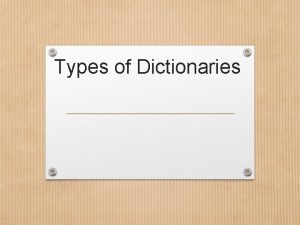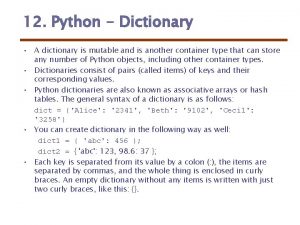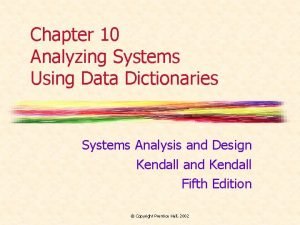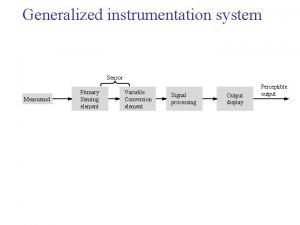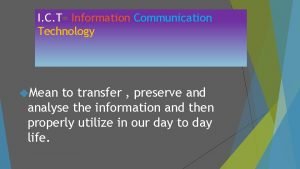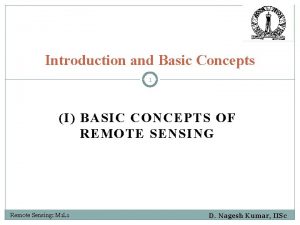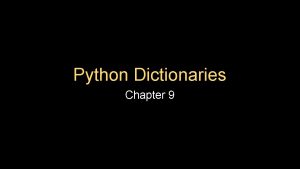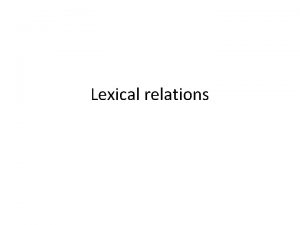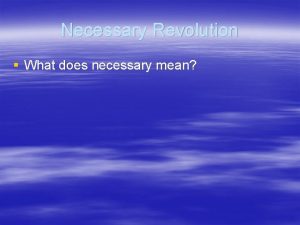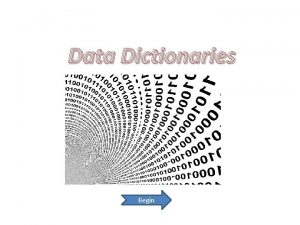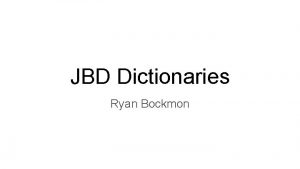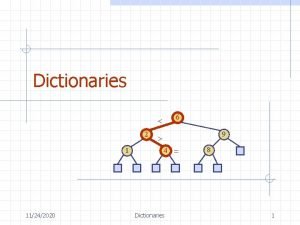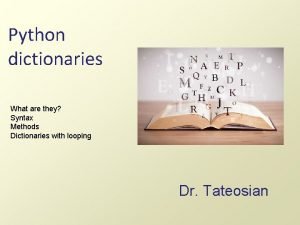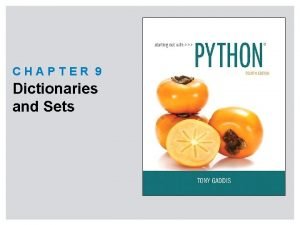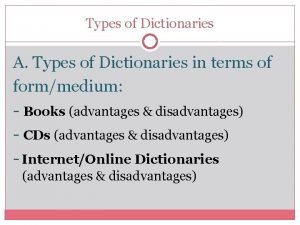Lexical Affect Sensing Are Affect Dictionaries Necessary to














- Slides: 14

Lexical Affect Sensing: Are Affect Dictionaries Necessary to Analyze Affect? Alexander Osherenko, Elisabeth André University of Augsburg

What emotions convey these textual utterances (SAL corpus)? 1. High arousal, negative valence: No, well, I'm not a fool. 2. High arousal, positive valence: No, <laugh> I think I'm being stupid actually. 3. Low arousal, positive valence: Yup.

Dictionaries 1. Dictionary of Affect Language (DAL - Whissell) „happy” (evaluation, activation, imagery) 3. 0000 2. 7500 2. 2 2. Linguistic Inquiry and Word Count Dictionary (LIWC) „happy” (categories) Affect, Positive emotion, Positive feeling 3. BNC frequency list 11649 happy aj 0 4. SAL frequency list

Research questions • • Are recognition rates higher if word features are emotional? Do emotive annotations in affect dictionaries improve recognition? Are common words more useful than less common words? Are dictionaries of affect more useful than generalpurpose dictionaries?

Feature Extraction and Evaluation 1. Word features – Selection of the most expressive words – Selection of the most frequent features 2. LIWC features (CAT-68 and CAT-8) 3. DAL features (EA-AVG) – Average values for the evaluation, activation, imagery scores

Evaluation • 672 utterances from the SAL corpus as a 5 classes-problem • The majority vote strategy • The SVM classifier • Averaged recall value/number of word features

Useful criterion of feature reduction without risking a severe degradation of recognition rates

Do emotive annotations in affect dictionaries improve recognition? Affect-related features do not include discriminative information that is not yet included in the word counts

Hard to say whether a reduction of features should be based rather on the frequency of words or their expressive qualities

General-purpose dictionaries may provide similar results as affect dictionaries for similar numbers of features

Recommendations • Frequency strategy is not worse than the emotional expressivity strategy – Similar trends for a movie reviews’ corpus • Results don‘t degrade dramatically when reducting number of word features (real-time recognition) – Acceptable results also with only affect annotations

Thank you!

Conclusion

Mapping of FEELTRACE data onto affect segments 1. 0 high_neg Activation high_pos 0. 2 neutral Evaluation 1. 0 low_neg low_pos • Examples: – [Affect segment: high_pos] (Laugh) I'm damn awful. How are you (laugh)? – [Affect segment: low_neg] Erm, that's probably true.
 Mikael ferm
Mikael ferm Types of lexical correspondences
Types of lexical correspondences Database of latin dictionaries
Database of latin dictionaries Types of dictionaries
Types of dictionaries Types of dictionaries
Types of dictionaries Is dictionary mutable in python
Is dictionary mutable in python Kirrkirr
Kirrkirr Example of data dictionary in system analysis and design
Example of data dictionary in system analysis and design Elements of instrumentation system
Elements of instrumentation system Definetion of communication
Definetion of communication Aerial photography in remote sensing pdf
Aerial photography in remote sensing pdf Image sensing and acquisition
Image sensing and acquisition Limitations of remote sensing
Limitations of remote sensing Canadian centre for remote sensing
Canadian centre for remote sensing Nuvations
Nuvations

